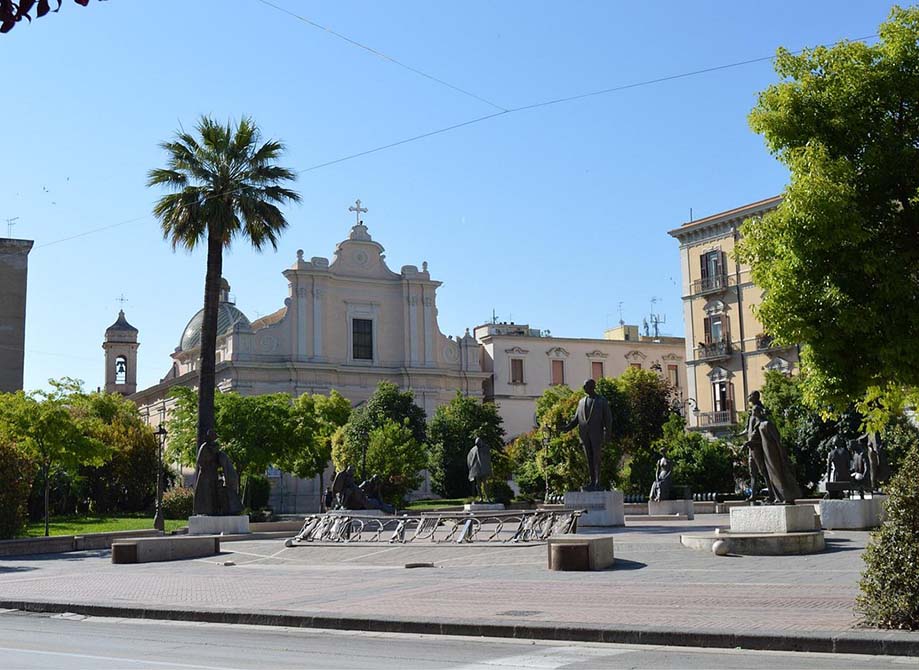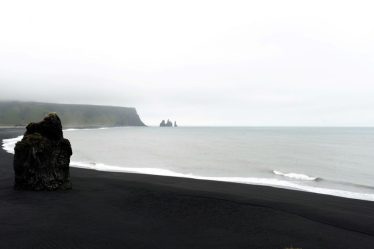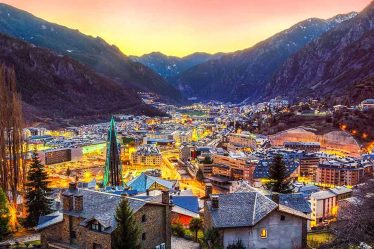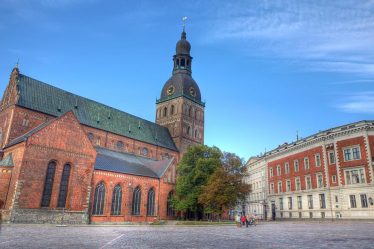I’ve always had a soft spot for places that fly under the radar — the kind of destinations that don’t make it onto every Instagram feed but hold a kind of authenticity and charm that’s hard to find elsewhere. That’s exactly what drew me to Foggia, a city nestled in the northern part of the Apulia region in southern Italy. Often overlooked in favor of coastal towns like Bari or Lecce, Foggia surprised me with its raw character, rich history, warm-hearted locals, and its connection to the soul of southern Italy.
From the moment I arrived, I felt as though I had stepped into a part of Italy that still beats with its traditional pulse — unbothered by mass tourism, yet steeped in culture and beauty. Foggia isn’t about postcard-perfect scenes or over-curated experiences; it’s about slow walks through sun-warmed piazzas, spontaneous conversations in corner cafés, and stumbling upon architectural wonders that have stood the test of time. If you’re planning a trip to southern Italy and crave something different, here are the places in Foggia that truly captivated me.
1. Piazza Umberto Giordano: The Beating Heart of the City
Every city has its soul, and in Foggia, I found it in Piazza Umberto Giordano. This central square was my favorite place to sit and absorb the rhythms of daily life. Named after the famous opera composer from Foggia, it’s a gathering point for locals — young couples, older men playing chess, families enjoying gelato — all coexisting in an easy, almost cinematic flow.
The piazza is beautifully laid out with manicured gardens, statues, and fountains. There’s a palpable calm here. I often grabbed an espresso from a nearby café and took a bench facing the opera statue. Watching the shadows shift over the buildings as the afternoon light softened was one of those grounding moments I still think about.

2. Cattedrale della Santa Maria Icona Vetere: A Spiritual Anchor
Foggia’s cathedral isn’t the grandest church I’ve visited in Italy, but it left a deep impression on me. The Cathedral of Santa Maria Icona Vetere has a long and storied history dating back to the 12th century, and what I loved most was its serenity. The exterior, with its Romanesque and Baroque elements, is understated yet elegant, while the interior is a quiet haven of frescoes, candles, and marble.
There’s something special about walking into a church like this when it’s nearly empty. The hush, the smell of wax and stone, the echo of your footsteps — it all makes you pause. I sat for a long while in one of the pews, simply observing the play of light through the stained-glass windows. It reminded me that beauty doesn’t have to be loud or ostentatious to move you.
3. Parco Karol Wojtyla: A Green Oasis in the City
For a breath of fresh air and a break from wandering the urban streets, I headed to Parco Karol Wojtyla, a large and well-kept park named after Pope John Paul II. It’s a bit outside the historic center, but absolutely worth the detour.
There were families picnicking, joggers circling the pathways, and children playing near the fountains. I took a long walk under the canopy of trees and found a peaceful spot by the small pond to read a book. Traveling can often be non-stop — trying to see and do everything — but this park reminded me of the joy of doing nothing at all.
4. Church of the Crosses (Chiesa delle Croci): Unusual and Fascinating
This was perhaps the most unique site I visited in Foggia. The Church of the Crosses is a small, open-air religious site unlike anything I’ve seen elsewhere in Italy. The complex consists of seven stone crosses that lead to a tiny chapel, and the atmosphere here is deeply contemplative.
As I walked slowly through the path of crosses, I couldn’t help but feel a reverence in the air. The story goes that it was founded in the 17th century following a miraculous event. Even if you’re not religious, the historical and cultural weight of the site is undeniable. It’s a quiet, sacred corner of the city that invites reflection.
5. Palazzo Dogana: Foggia’s Historic Nerve Center
One of the most historically significant buildings in the city, the Palazzo Dogana once served as a customs house during the days when Foggia was a major center for sheep farming and transhumance (the seasonal movement of livestock). The palace today is a testament to Foggia’s role in the economic history of southern Italy.
I joined a small local tour and got to explore its restored interiors and hear stories of the city’s past. From the grand staircase to the old rooms lined with artifacts and paintings, the Palazzo gave me a clearer picture of Foggia’s importance in centuries gone by. It’s not just a building — it’s a storyteller.
6. Mercato Rosati: A Local Flavor Explosion
One of my favorite travel rituals is visiting local markets, and Mercato Rosati didn’t disappoint. It’s a sensory overload in the best possible way — vibrant stalls, the smell of ripe tomatoes, cheeses hanging in rows, and the musical rhythm of local dialects echoing through the air.
I sampled fresh burrata that nearly melted on my tongue, picked up sun-dried tomatoes and olive oil to take home, and chatted with a vendor who insisted I try his homemade taralli. The market is where you truly meet a city’s heart — and stomach.
7. Teatro Giordano: Art and Performance in the South
Named again after Foggia’s beloved composer Umberto Giordano, this historic theater is a beautiful example of neoclassical architecture and a cultural hub in the city. I was fortunate to catch a small chamber concert during my visit, and it felt like being part of a local secret.
The interior is intimate and ornate, with red velvet chairs and gilded balconies. Even if you don’t attend a performance, the building itself is worth admiring. It stands as a reminder of Foggia’s artistic heritage and the enduring value of music in southern Italy.
8. Day Trips from Foggia: Gargano National Park & Monte Sant’Angelo
Foggia also serves as a fantastic base for exploring the surrounding countryside. I rented a car and drove to Gargano National Park — a lush, forested peninsula that juts into the Adriatic. The drive itself was a joy: winding roads, hilltop villages, and the occasional view of the sea.
Monte Sant’Angelo, perched high on a mountain and known for the Sanctuary of Saint Michael, was another highlight. The medieval alleyways, whitewashed houses, and spiritual vibe made it one of the most moving places I visited. It’s only about an hour from Foggia, but it felt like stepping into another world.

Why Foggia Stole My Heart
Foggia may not have the glitz of Venice or the fame of Rome, but it has something else — a realness that’s becoming increasingly rare in travel. It’s a city that welcomes you not with spectacle, but with substance. The people are kind without pretense, the history is deep without being over-marketed, and the atmosphere is unpretentious in the best possible way. There are no crowds pushing you through landmarks, no endless lines for the “perfect” photo spot — just the quiet hum of everyday life, infused with character and warmth.
What I loved most about Foggia was the freedom it gave me to truly slow down. In so many destinations, travel can start to feel like a checklist — a race from one iconic site to the next. But in Foggia, I wasn’t ticking boxes. I was wandering. Lingering. Breathing. I spent mornings meandering through shaded alleyways, letting the day unfold without a strict plan. I chatted with elderly vendors at the market who insisted I taste their olives. I stumbled into small churches and found myself sitting for long stretches, lost in thought. There’s a kind of magic in a place that doesn’t rush you — that lets you rediscover how to simply be.
One afternoon, I sat at a café in Piazza Umberto Giordano, sipping an espresso that cost less than a bottle of water back home. I watched children chase pigeons, friends greet each other with laughter and kisses on the cheek, and older couples walk hand in hand under the warm light. It felt like I was watching life — real life — unfold in slow motion. That memory lingers more vividly than any monument.
And then there are the small details that caught me by surprise: the scent of fresh bread wafting from a hidden forno, the colorful laundry swaying from balcony to balcony, the soft tolling of church bells in the distance. In Foggia, the beauty is in the details. It’s not polished or postcard-perfect, but that’s precisely why it’s so moving.
Foggia invited me to be present. It asked nothing from me other than curiosity and an open heart. And in return, it offered me something rare and lasting — a sense of connection, not just to a place, but to a way of experiencing the world that feels increasingly precious.
That’s why Foggia stole my heart. And honestly, I hope it never changes.


